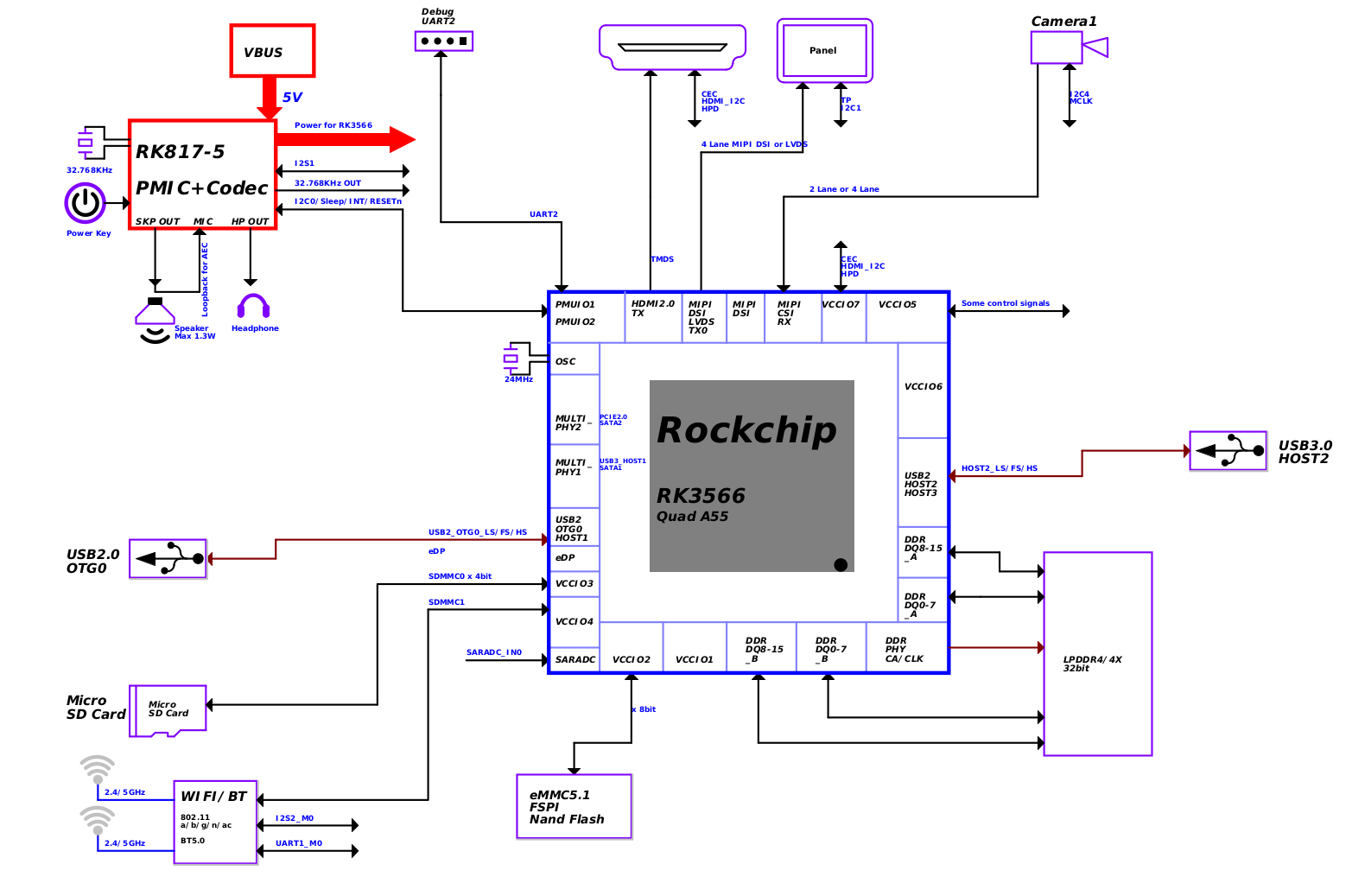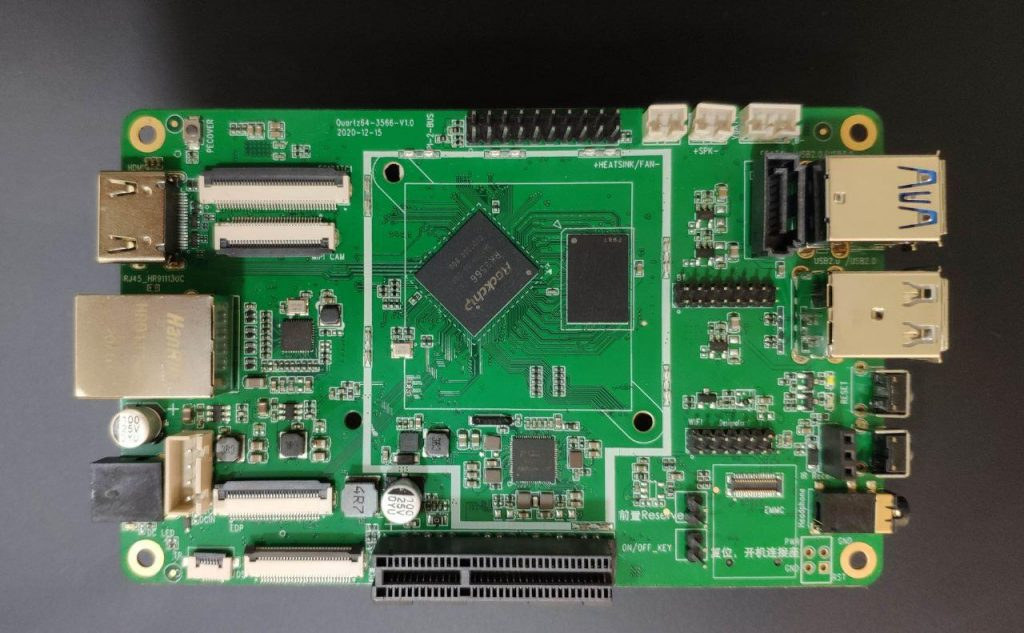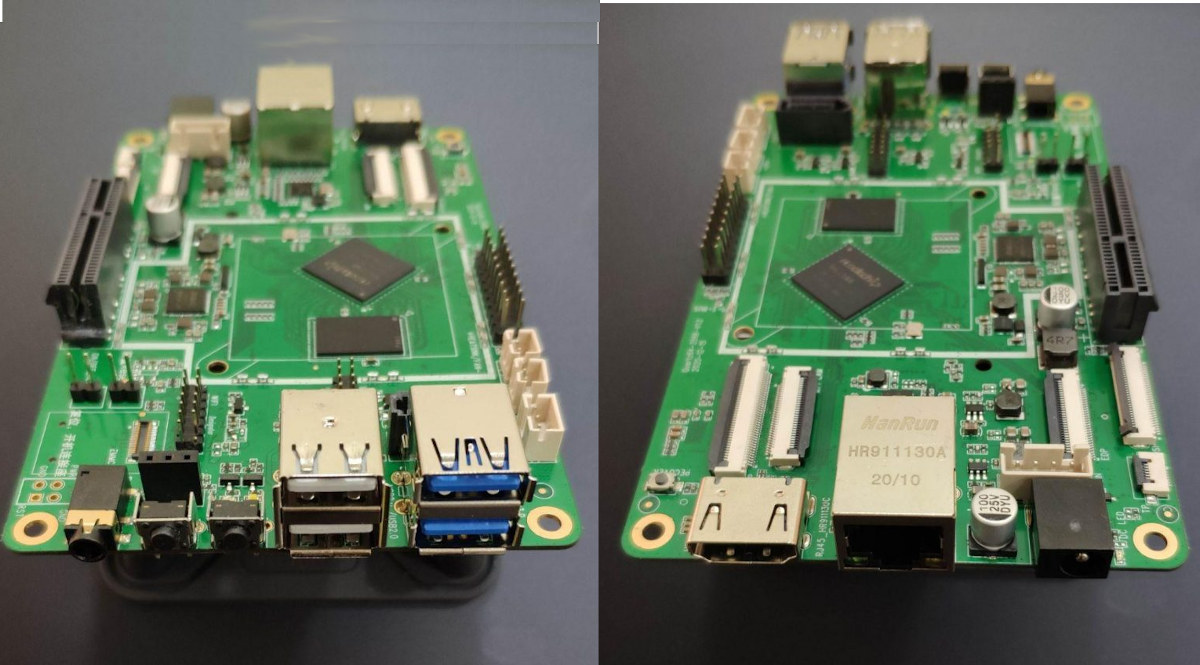We may just have written about Geniatech RK3566/RK3568 development board, but as expected, Pine64 has now unveiled more details about Quartz64 SBC powered by Rockchip RK3566 SoC.
As we’ll see below, the design is very similar to RK3399 based RockPro64, but the new model adds a native SATA 3.0 port, an integrated battery charging circuitry, an ePD port for e-Ink displays, and supports more memory with up to 8GB LPDDR4 RAM.
Quartz64 Model A preliminary specifications:
- SoC – Rockchip RK3566 quad-core Cortex-A55 processor up to 1.8 GHz with Arm Mali-G52 GPU supporting OpenGL ES 1.1/2.0/3.2, OpenCL 2.0, Vulkan 1.1, 0.8 TOPS NPU for AI acceleration
- System Memory – 2GB to 8GB LPDDR4
- Storage
- SPI Flash
- optional eMMC module from 16GB up to 128GB capacity
- bootable SDHC/SDXC MicroSD card up to 256GB (or is it 2TB?)
- SATA 3.0 port (multiplexed with USB 3.0)
- Video Output / Display Interfaces
- HDMI 2.0a up to 4Kp60
- 4-lane eDP up to 2560×1600 @ 60Hz
- 4-lane MIPI DSI up to 1440p
- SPI Touch Panel Port, SPI with interrupt
- Camera I/F – 4-lane MIPI CSI camera Interface up to 8MP
- Networking
- 10/100/1000Mbps Gigabit Ethernet RJ45 port
- Optional WiFi 802.11 b/g/n/ac with Bluetooth 5.0 via header via SDIO 3.0 and UART
- USB – 3x USB 2.0 host ports, 1xUSB 3.0 host port
- Expansion
- 2x 10-pin GPIO header
- PCIe x4 open-ended slot with PCIe 2.0 x1 interface
- Misc – RTC battery connector
- Power Supply
- 12V/3A DC input via 5.5/2.1mm DC barrel jack
- VBAT Lithium Battery Connector with temperature sensor input
- Dimensions – 133 x 80 x 19mm
It’s nice to have SATA, but as I understand it, the board relies on one of the multi-PHY Interfaces from RK3566 processor with SATA and USB 3.0 being multiplexed, meaning you can use SATA 3.0 if you don’t use USB 3.0, and use USB 3.0 if you don’t use SATA.
The specifications above are specific to model A, as there will also be Quartz64 model B about the size of a Raspberry Pi Model B board with built-in WiFi & Bluetooth, and a 40-pin GPIO header. An M.2 PCIe socket will take place of the PCIe slot, MIPI DSI and CSI connectors will be reduced to 2-lane up to 1080p displays and 5 MP cameras respectively, and model B will also lack SATA and eDP, and come with one less USB 2.0 port.

The board will support both Android 11 and Linux distributions, but right now, you’ll find some specifications, PDF schematics (model A only), as well as the Android 11 SDK in the Wiki. Once Linux is up and running on the platform, Pine64 expects Panfrost open-source GPU driver to just work out of the box.
Bear in mind that Quartz64 is not a “Pro’ board, and performance-wise, the four Arm Cortex A55 cores clocked at 1.8GHz are only about 15-25% slower in computational tasks than the ROCKPro64. Initial benchmarks (Geekbench 4) also show Quartz64 to have about the same CPU performance as Raspberry Pi 4, and CPU temperature rarely spiked over 60°C under load even without a heatsink.
Pine64 is not ready to announce a launch date yet, but we do know they plan to have a 10-inch e-Ink panel available in the Pine Store when the SBC officially launches.
We learned about the new board in Pine64’s February update, where an upcoming $15 Linux RISC-V board was also announced. The yet-to-be-named SBC will be powered by a XuanTie C906 based RISC-V processor plus BL602 RISC-V SoC for WiFi & Bluetooth connectivity. Pine64 also plans to design a range of LoRa/LoRaWAN hardware from modules to gateways and expects it to be used for LoRa-based text communication besides just IoT networks.

Jean-Luc started CNX Software in 2010 as a part-time endeavor, before quitting his job as a software engineering manager, and starting to write daily news, and reviews full time later in 2011.
Support CNX Software! Donate via cryptocurrencies, become a Patron on Patreon, or purchase goods on Amazon or Aliexpress






